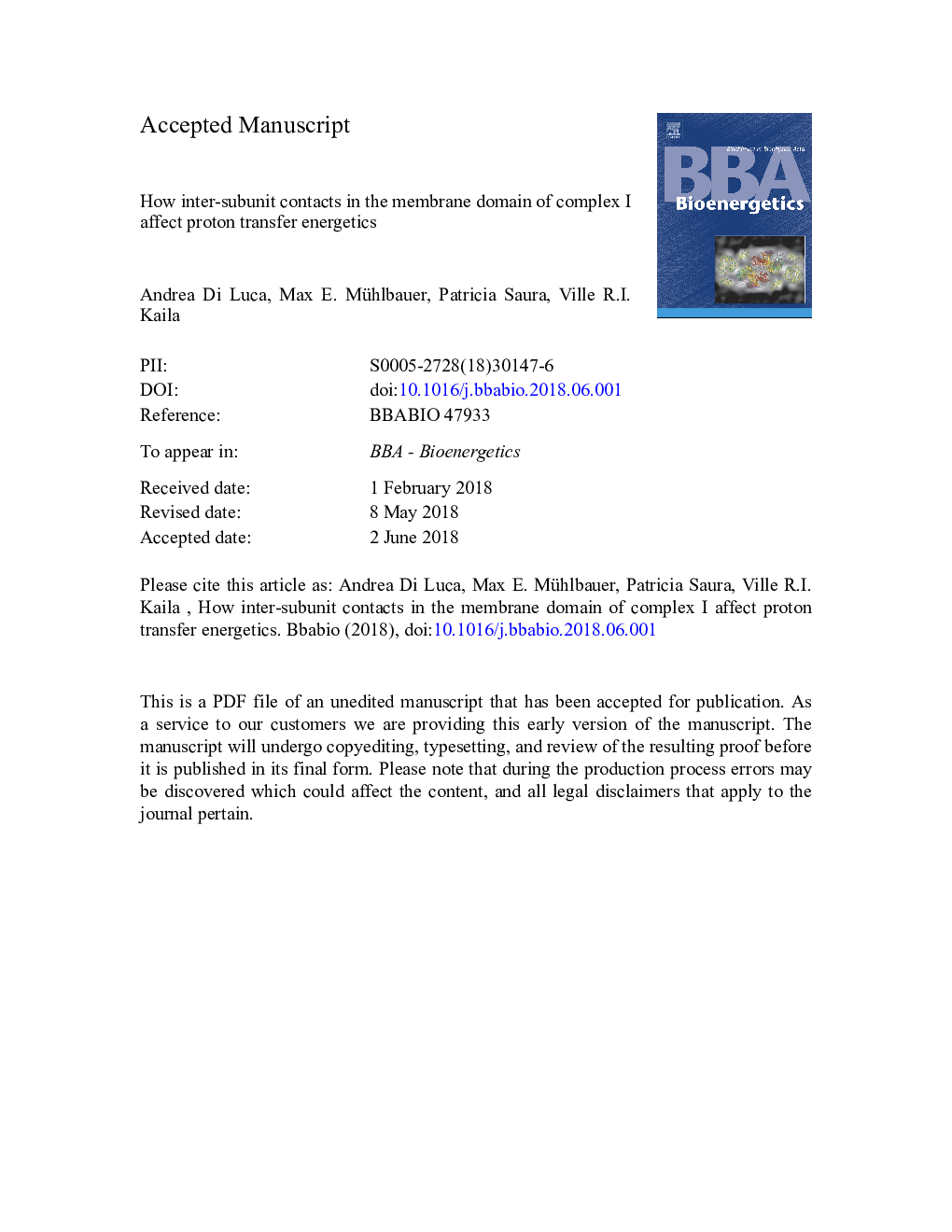| Article ID | Journal | Published Year | Pages | File Type |
|---|---|---|---|---|
| 8298527 | Biochimica et Biophysica Acta (BBA) - Bioenergetics | 2018 | 22 Pages |
Abstract
The respiratory complex I is a redox-driven proton pump that employs the free energy released from quinone reduction to pump protons across its complete ca. 200â¯Ã
wide membrane domain. Despite recently resolved structures and molecular simulations, the exact mechanism for the proton transport process remains unclear. Here we combine large-scale molecular simulations with quantum chemical density functional theory (DFT) models to study how contacts between neighboring antiporter-like subunits in the membrane domain of complex I affect the proton transfer energetics. Our combined results suggest that opening of conserved Lys/Glu ion pairs within each antiporter-like subunit modulates the barrier for the lateral proton transfer reactions. Our work provides a mechanistic suggestion for key coupling effects in the long-range force propagation process of complex I.
Related Topics
Life Sciences
Agricultural and Biological Sciences
Plant Science
Authors
Andrea Di Luca, Max E. Mühlbauer, Patricia Saura, Ville R.I. Kaila,
